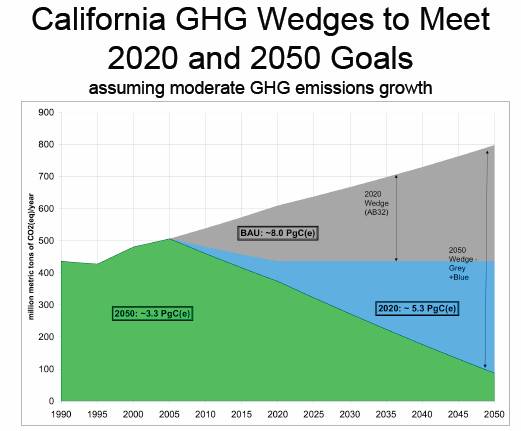California’s 2050 Greenhouse Gas Emission Goals
Department of Physics and Astronomy
U. C. Irvine
The IPCC has indicated that to achieve a low value of global
warming, the greenhouse gas emissions have to be reduced by around 80% from
1990 levels, to stabilize the greenhouse gases.
European countries are striving for a 60% to 80% reduction by 2050.
The following graph shows how the reductions could occur to reach that goal, from a talk by Steven Schiller, an advisor to the California Institute for Energy and the Environment, University of California, Office of the President.

If we consider that the lifetimes of power plants are around
40 years, and that the lifetime of houses and commercial buildings are around
40 years, anything that we build now and in the future will be around in the
year 2050. Thus, each of them has to be
chosen or designed, starting now, to operate at only 20% of the emissions that
is currently allowed. Automobiles have
more of a 20 year
Further research and development in the energy area will lead to new efficient processes, but much is already known about how to be energy efficient. Changes in attitudes and behaviors can also go a long way to reduce energy use and increase efficiency.